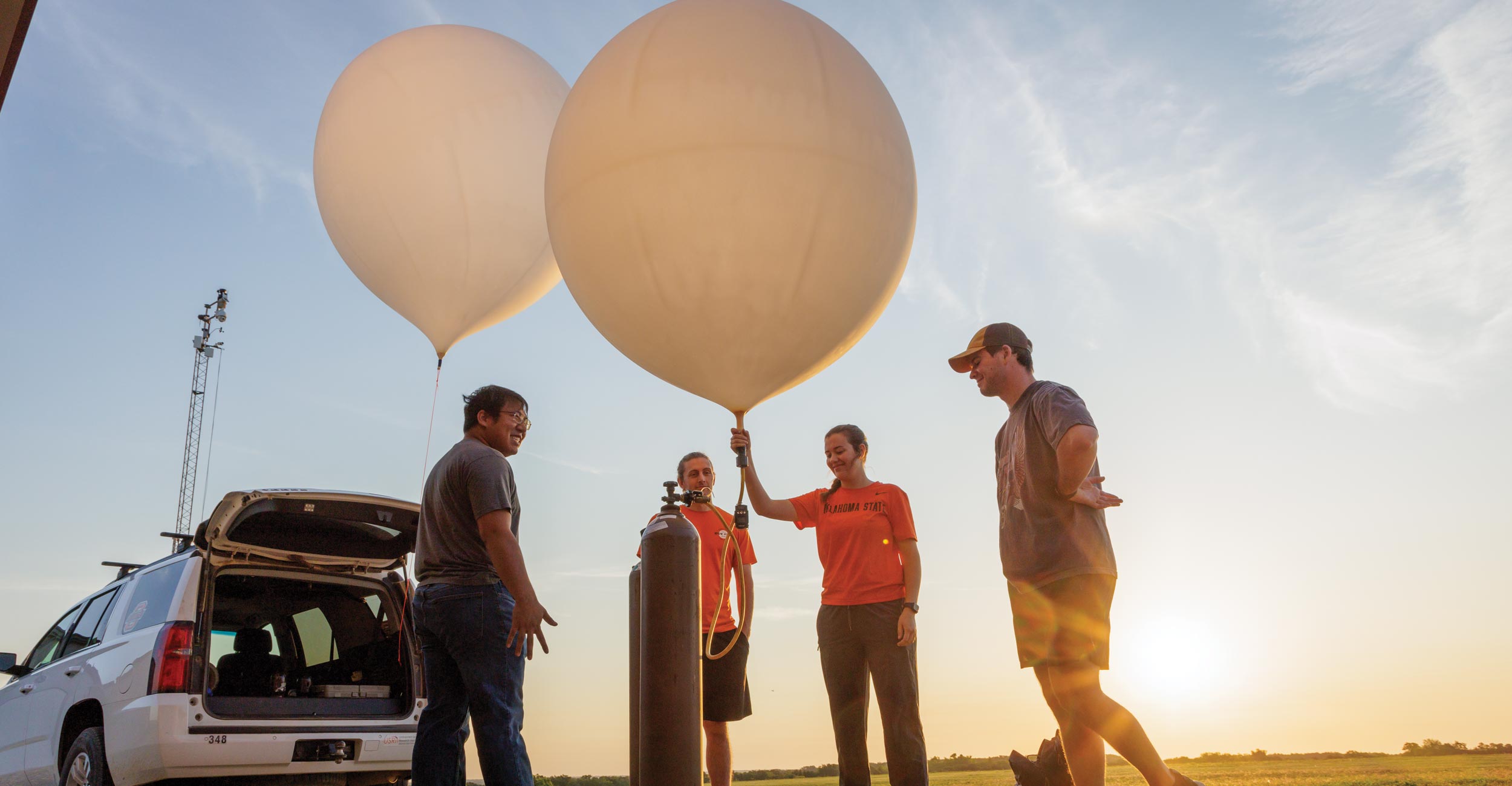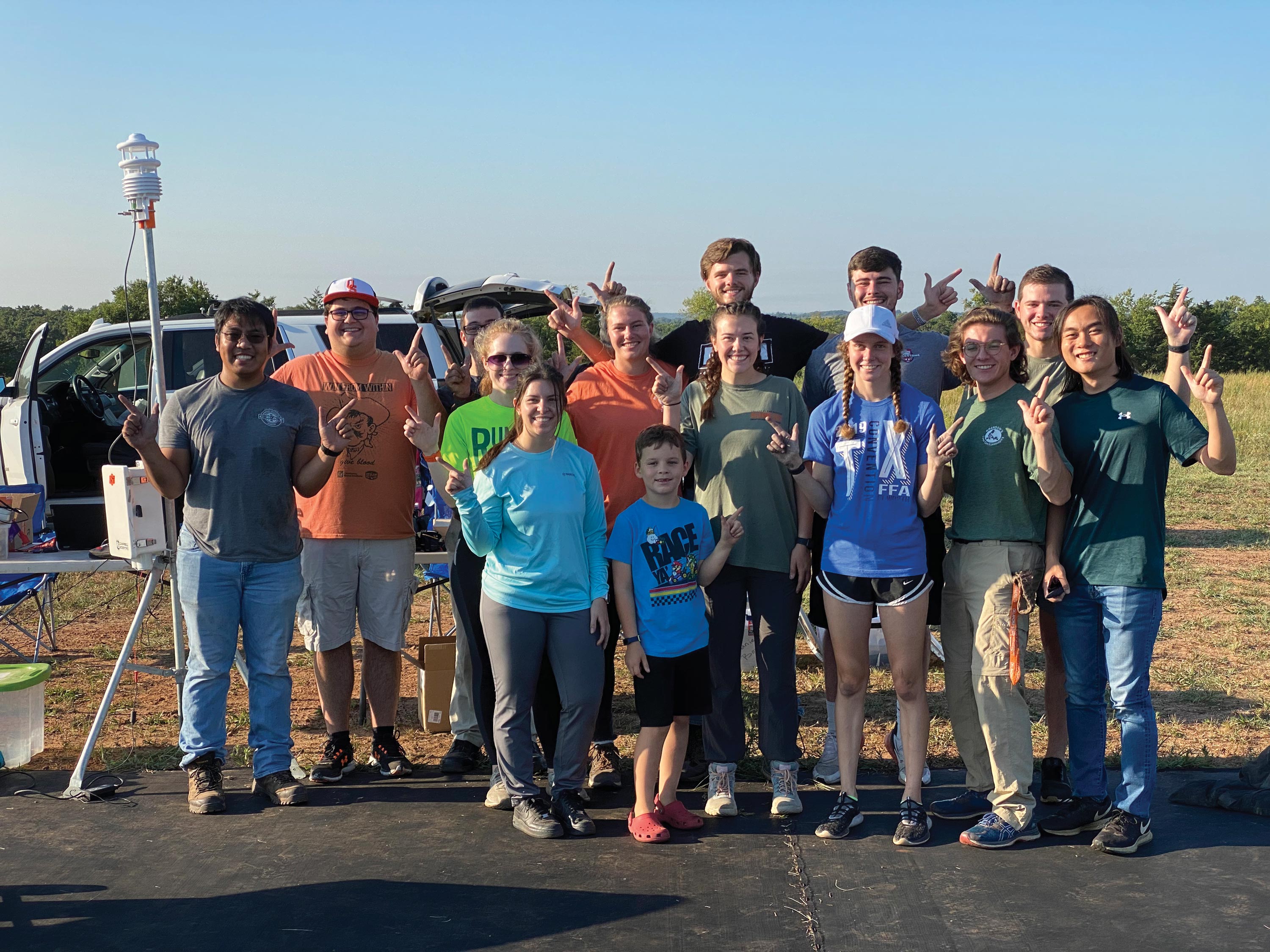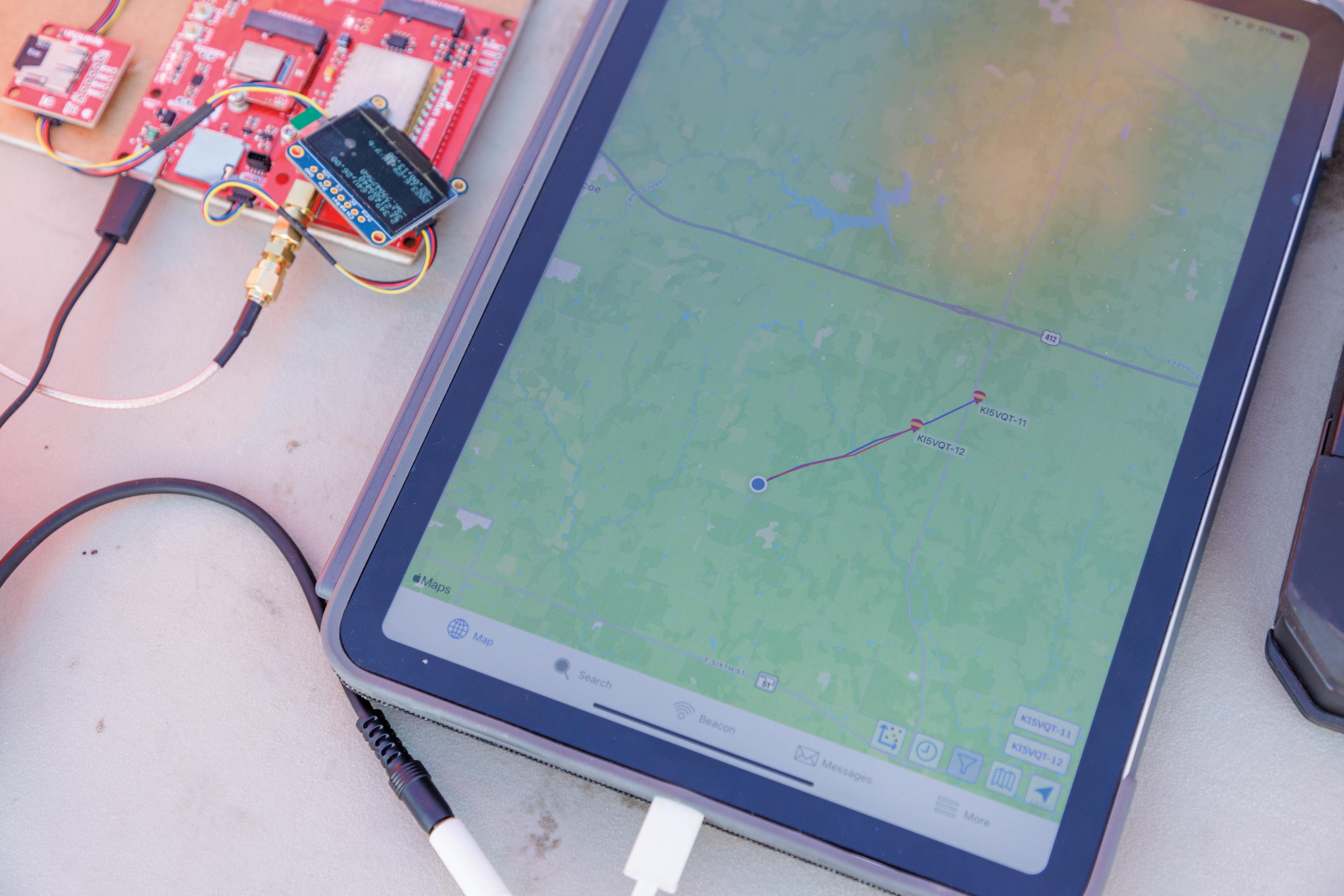
Float On: OSU's high-altitude balloon project aiding in Venus exploration
Monday, September 18, 2023
Media Contact: Harrison Hill | Senior Research Communications Specialist | 405-744-5827 | harrison.c.hill@okstate.edu
One hundred and twenty minutes.
That’s how long something can survive on the surface of Venus — a record set by a Soviet Union probe in 1981 — due to the extreme surface temperatures and pressure.
Although Venus is believed to have a structure like Earth and there’s been a long history of wanting to study seismology on Venus, doing such research on the surface is almost impossible. However, in the planet’s upper atmosphere, there’s a region Earth devices can survive in.
Dr. Brian Elbing, Oklahoma State University associate professor of mechanical and aerospace engineering, has studied low frequency sounds — aka infrasound — from tornadoes for many years.
Elbing’s research on the sounds below human hearing caught the attention of an OSU alumnus working at Sandia National Laboratories.
The two connected, which eventually led to a series of conversations that ultimately put Elbing and Dr. Jamey Jacob — executive director of the Oklahoma Aerospace Institute for Research and Education, Williams Chair in Energy and professor of aerospace engineering — on a proposal with the NASA Jet Propulsion Laboratory and Sandia to fly high-altitude balloons, or heliotropes.

“They wanted to do it in Oklahoma, but a concern of the funding agency was that they didn’t have sufficient flight support in Oklahoma to handle the logistical challenge of flying so many balloons in Oklahoma,” Elbing said. “And so, the timing was perfect with setting up this meeting. I said, ‘We have tons of aerospace capabilities and launch capabilities.’ So, the NASA Jet Propulsion Laboratory and Sandia National Laboratories added us on the proposal.”
NASA JPL proposed to fly high-altitude balloons on Earth measuring infrasound from earthquakes. Theoretically, they could send a balloon to the upper region of Venus and use the same payloads to be able to understand if there’s Venusquakes, volcanic activity, storms or any type of natural phenomena with infrasound.
In 2021, OSU worked on a campaign with Sandia National Laboratories and NASA JPL with the goal of targeting small earthquakes using heliotropes. For two summers they launched over 80 balloons.
OSU was supposed to have a relatively small piece of this project, but due to the capabilities of the department, they continually got larger pieces of the project and now are responsible for every launch.
“It’s very much a testament to us, it was a relatively small opportunity, where we just did what we did and we keep getting more and more work,” Elbing said.
OSU has continued the infrasound project and is researching ways of improving the measurements at altitude of the balloons, Elbing said.
DROWNING OUT THE NOISE
Stratospheric wind blows east most of the year, but from late May to September, it shifts to the west, which is ideal to launch balloons due to Oklahoma’s landscape.
A typical launch day is sunny with calm winds, but for Taylor Swaim, a mechanical and aerospace engineering graduate student, wind noise is important for her NASA funded project to explore wind screens for the payloads.
A standard payload package has a microbarometer, which measures slight changes in pressure including the change in pressure due to sound, Swaim said.
“‘We have tons of aerospace capabilities and launch capabilities.’ So, the NASA Jet Propulsion Laboratory and Sandia National Laboratories added us on the proposal.”
The heliotropes Swaim and the OSU ballooning team launch have a high drag coefficient, so they float in the wind leaving the relative wind on the upper payload small. However, a long flight line is needed to resolve the angle of arrival from the signal. With that long line comes more wind noise, which becomes more amplified on Venus, Swaim said.
“Noise is one of the biggest issues with capturing infrasound signals, because wind is present everywhere and it will swamp out the signals we’re trying to find. I’d say that’s one of the most difficult parts with measuring infrasound,” Swaim said. “They’ve measured vertical gusts on Venus that are up to 3.5 meters per second.
“So, our goal is to identify a compact, lightweight windscreen solution that can reduce wind noise without having any signal suppression.”
First, the project needs to find a design that works on heliotropes, which have about 3.25 kilograms of flight line weight. To combat that, Swaim is researching current ground wind mitigation and more compact methods that have been successful.
She has identified two porous materials that have worked well. Using a specific type of canvas material and polyurethane foam, Swaim created three different models to test on a standard payload.
CONTROLLING TRAJECTORY
The team continues to solve the noise problem, but the next step is learning how to guide the heliotropes in the air.
Once launched, the balloons take two hours to reach float altitude — between 60,000 and 70,000 feet — and will float for close to 12 hours in the direction of the wind.
“Currently, there is not a way to predict the exact trajectory of the balloons,” said Emalee Hough, a mechanical and aerospace engineering graduate student and team lead.
Using current wind direction and the weight of the entire system, the team can predict the expected altitude and therefore get the general idea of where the balloon will land. However, a shift in wind can change the course quickly.
“My idea is to add a little bit of control to the balloon by adding a top vent,” Hough said. “Most of our balloons have an open mouth to allow the air to recirculate. But we want to use the vent system to control altitude. When it hits a specific altitude, the vent opens to decrease altitude and then it’ll close back up and get buoyant again because we have the circulation of the air coming in.”
This control will eventually allow Hough to keep multiple floating balloons together, which will help make triangulating the infrasound source more accurate.
“Our balloons have two infrasound sensors separated by 100 feet or 30 meters of string. But we know that the way that it propagates across, it should be like a 0.1 second delay between the two sensors. And then you can use that to identify a circle of where the source is located,” Hough said.

KEEPING IN TOUCH
Currently, the balloons use low power long range radio (LoRa) for communication.
LoRa sensors allow for transmitting small size payloads over long distance using greater communication range with low bandwidths for wireless data transmission technologies.
Mechanical and aerospace engineering graduate student Zach Yap is researching communication methods from balloon-to-balloon and balloon-toground looking for ways of improvement.
LoRa uses chirps with a unique signature, which allows Yap to pull out the signal even if it’s below the noise floor, giving more range for less power output he said. The team has had some success with this method but is hoping to test it in more flight scenarios.
“My research idea is we have two balloons that can communicate and coordinate both information and location so that Emalee’s venting system can have the balloons maintain altitude, which that difference in altitude is the driving force behind why balloon separate,” Yap said. “If we can keep the balloons together, then we have this operating swarm of balloons, which then works with Taylor’s windscreens. So, then we can have multiple sensors that can triangulate the location of an event.
“There’s a window in time when we launch those balloons where we can accurately backtrace where the balloon
and the earthquake location is and that’s really determined by how far the balloons are apart. What we want to do is eventually get to a point where we can keep the balloons together to increase that duration of time when we can accurately do that back tracing.”
Yap leads the technical instrumentation side of the projects and coordinates with the Federal Aviation Administration for each launch.
“We have launched over 80 balloons in the last two years, and that’s shown Oklahoma State has developed this capability to a level that’s repeatable and reliable,” Yap said. “Of those 80, every single balloon that was intended to be recovered has been recovered. So, we have a 100% recovery rate and that’s a good demonstration to companies like Sandia, like JPL, who are interested in using these balloons as a lower cost research effort, that this is a low risk to other methods and for a lower cost.
“It opens a lot of doors for research that we can get funded and get grants to do.”
Photo By: Gary Lawson and Dr. Brian Elbing
Story By: Sydney Trainor | Research Matters Magazine
